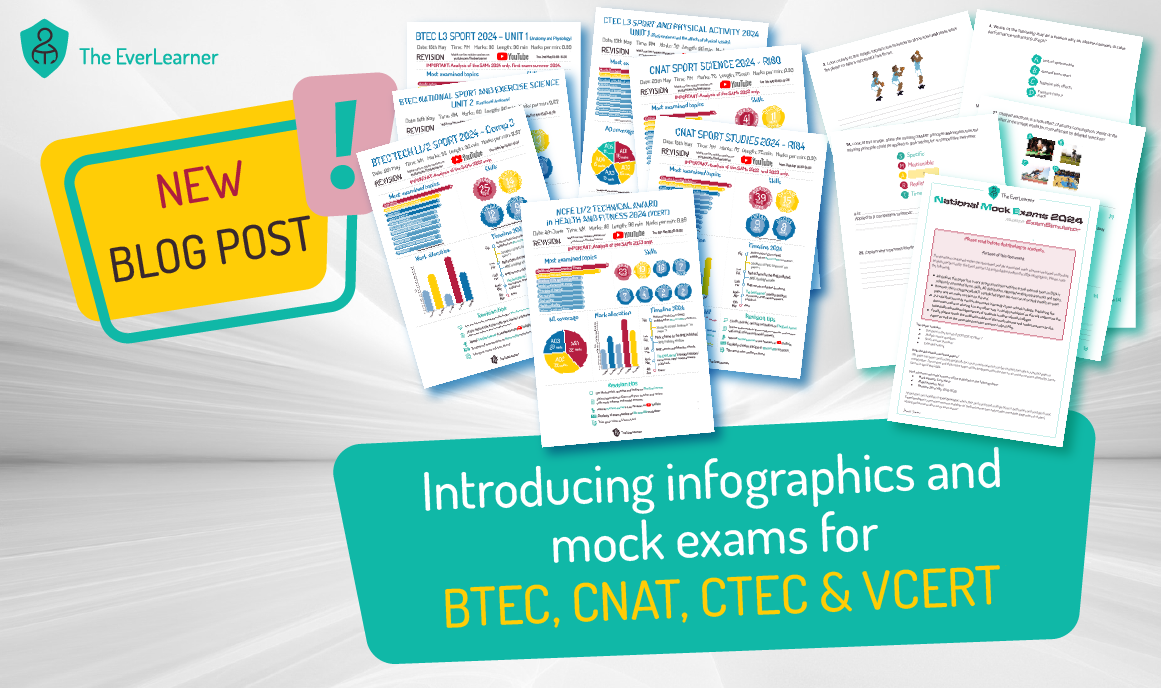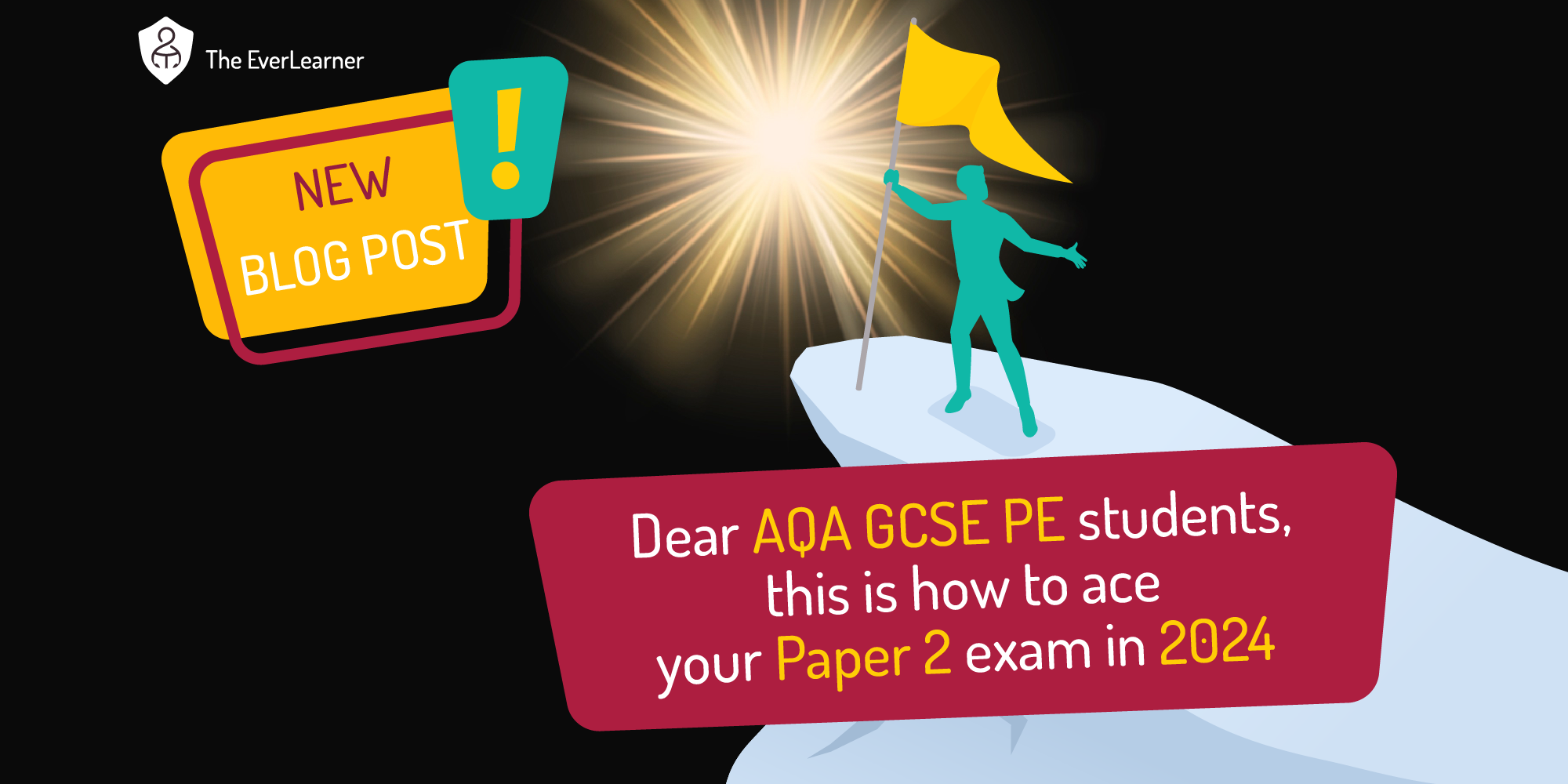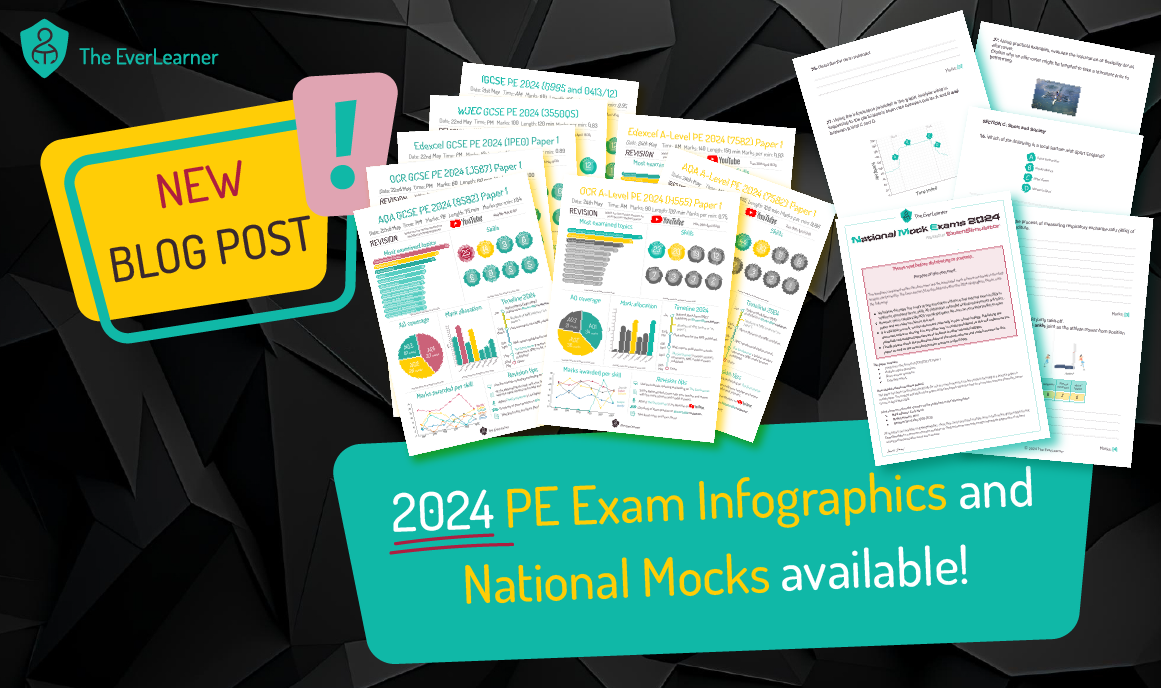Within this post, I want to detail eight different ways you may choose to utilise the 2025 National Mock Exams (NME) in PE and Sport. Some of the methods are quite formal and summative, whilst others are utterly collaborative and formative. I encourage you to take your pick of these methods as suits you and your PE students.
Let’s get started:
Eight ways to use the 2025 National Mock Exams:
- As a formal, mock exam
- As a practice paper
- As a model paper
- As an editable template
- As a per-lesson assessment
- As extended writing practice
- As a collaborative writing tool (consider 'Pass the Buck')
- As a pre-revision resource
Before we get started, I want to stress that there are many other ways you could use these papers. Also, I want to confirm the following facts about the papers and mark schemes. They are:
- exam-board specific and paper specific;
- based on a thorough analysis of all previous exam board papers and mark schemes;
- inclusive of all of our 2025 Hot Topics;
- incorporated into our 2025 revision sessions;
- exact mirrors of the real exam-board skill requirements, such as command words and question structures;
- highly attuned as 2025 summer exam preparation resources.
So, with all those things understood, let’s get started.
Method 1: As a formal, mock exam
With immediate effect, both customers and non-customers of TheEverLearner.com can use the 2025 NMEs as a mock exam preparation experience. The NMEs are fully detailed to be used as a mock exam and we encourage those of you wishing to provide real-world experiences to do so with your students.
It goes without saying that the mock exams can be subsequently used with any of the other seven methods once the mock has been sat. Key info about using the NME as a mock:
- The paper is available now.
- The mark scheme is available now.
- It can be taken online (customers only; please, get in touch if you wish to have a trial of ExamSimulator) or on paper (all).
Therefore, your newest, externally written and highly attuned mock exam, based on the exact rhythms of previous exam board papers is ready to go.
Advantages of this model:
- Simple
- Data extraction
- Real experience including time restrictions
- Unseen questions and mark schemes, providing a more challenging environment
- Efficient
- Online or paper writing and marking
- Automated analysis and personalised diagnostics (customers only)
Disadvantages of this model:
- Limited formative experience
- May add assessment burden to already-stressed students
Method 2: As a practice paper
Likewise, with immediate effect, both customers and non-customers can utilise the NMEs as practice papers.
You may wonder what the difference between practice and mock (assessed - method 1) is. In my opinion, removing some of the assessment features from model 1 makes it a practice paper. These could include removing the time limit, making the paper multi-sitting, writing it at home as well as in class, etc.
TheEverLearner.com allows teachers to set practice exams and these can be open for a broader period of time than the assessed papers. Students can start writing, leave the paper, come back, add a bit, etc. until a deadline (set by the teacher) passes. Therefore, there is flexibility in this model.
Advantages of this model:
- Flexible
- Multi-lesson/homework experience
- Allows for a more distributed experience with feedback during the writing process.
- Unseen questions and mark schemes provide a more challenging environment.
- Online or paper writing and marking
Disadvantages of this model:
- Less efficient - takes longer
- Automated analysis and personalised diagnostics (customers only) still available but are derived from a non-assessed experience
Method 3: As a model paper
An excellent way to use the NMEs is in discussion with students emphasising some of the core features of their exam in the summer.For example, teachers can discuss all of the following with their learners with or without writing the paper:
- Exam structure (use in relation to the infographic)
- Exam command terms (use in relation to the infographic)
- Data analysis questions
- Question imagery
- Use of space (lines and margins)
Therefore, these discussions can lead to decisions that students may not be aware to make such as:
- Which order to answer the paper
- How to start answer for specific commands
- How to annotate questions and images to help students answer more specifically
- How to plan answers including extended writing
- When to use the E-I-O model
This type of modelling provides much better familiarity of the paper to students.
Advantages of this model:
- Informative
- Gives confidence to students.
- A good change-up from the experience of Year 11s and Year 13s
- Both the paper and the mark scheme can be analysed and modelled.
Disadvantages of this model:
- No actual answering or marking taking place
- Lack of analysis and personalised diagnostics (customers only)
Method 4: As an editable template
With any of the models above or below, customers can use the NMEs as editable templates. This means that a teacher can take a question or a section out or add a replacement question if they wish. The idea is that you may still be teaching content or even have specific skill or content foci between now and the real exams in May and June. If so, you can edit one of our mock exams to make it your very own.
Please be aware that this is a customer-only feature.
Advantages of this model:
- Completely dynamic mock paper and mark scheme
- Tailor the paper to your position on the course
- Use it as an assessed or practice paper
- Automated analysis and personalised diagnostics for adapted papers (customers only)
- Thousands of alternative questions available for you to choose from
Disadvantages of this model:
- A little bit of teacher admin to swap questions in and out
- Less comparable to other centres that are likely to be using the standard mock exam
Method 5: As a per-lesson assessment
I love this one!! Why not consider using the NMEs over a period of time and having your students answer a few questions at a time as you progress through the revision period in your class?
Let’s say that you want to split a paper into three lessons. You could have your students answer and then mark section A before doing the same with section B in the following lesson and then complete the picture with the extended writing piece or equivalent in your third lesson. This could be an excellent source of ongoing development and familiarisation with both the writing and marking of the papers.
Advantages of this model:
- Excellent use of lesson revision time
- Different students can focus on different content areas and skills.
- Students can repeat any segments that they struggle on.
- Increases familiarity with the marking process.
Disadvantages of this model:
- Takes longer (by design)
- Students won’t experience the “real thing” unless you have them sit the paper again as an assessment at the very end.
- Student marking may be more variable than the teacher's marking.
Method 6: As extended writing practice
All of our mock exams that should include extended writing do include extended writing whether this be 10s and 20s for OCR A-level, 6s and 9s for AQA GCSE or 8s for R180 Cambridge National. I urge you to utilise our extended writing NME questions as outstanding preparation for your students.
Alongside this, I also urge you to use my extended writing frameworks to help scaffold your students as they write. I have extended writing frameworks for all GCSE PE courses, as well as extended writing frameworks for AQA A-level PE and extended writing frameworks for OCR A-level PE. These resources are utterly free to download and I, once again, urge you to get your students using them.
By the way, I’m a really big fan of introducing or developing extended writing in the Pass the Buck model which features in model 7 of this post below. You could consider this too.
Advantages of this model:
- Specific focus on extended writing
- Demystifies the “big” questions.
- Can be done in combination with extended writing frameworks.
Disadvantages of this model:
- Fewer docs on smaller mark questions
- Can be time-consuming
Method 7: As a collaborative writing tool (consider 'Pass the Buck')
If you are using the NMEs as practice experiences or even if you are using them after you have undertaken their use as an assessment, you should consider collaborative writing.
'Pass the Buck' is a stunning example of this and you could use the structure to write part or even all of the paper. It works like this:

Each pair of students has a copy of the paper and then, upon your instruction, they start writing. However, after a few minutes (be strict on your timings) the paper they have started is passed onwards to the next table. Likewise, all other tables do the same.
This is an outstanding way of developing collaborative writing across a group and I wholeheartedly endorse it. I think I have used 'Pass the Buck' in the region of thousands of times in my career.
Advantages of this model:
- Every student sees the ideas and writing of every other student.
- Friendly competition
- Time pressures but in a fun way
Disadvantages of this model:
- Harder to assess an individual
- A bit “messy” in class. I love this, though!
Method 8: As a pre-revision resource
Folks, I cannot stress this enough: Your students would really benefit from both:
- completing and marking their mock exam;
- attending the summer revision sessions with me.
My revision is going to feature lots of elements of the mock exams and I am extremely confident that this will be beneficial to students.
Have your students engage with the mock in any of the models described above and then attend the revision. I guarantee that you won’t regret this!
Advantages of this model:
- Complete the cycle of assessment, revision and then, we hope, exam performance.
- Outcompete other centres.
- Extremely well-prepared students
Disadvantages of this model:
- You need to be a customer to attend the revision sessions or receive the recordings: Join us!
Conclusions
So, folks, there you have it. Eight models of usage for The EverLearner National Mock Exams (NMEs). I believe there is something here for everyone. I hope you found something that will help you and your students.
Have a lovely day.
James.
%20Text%20(Violet).png)



